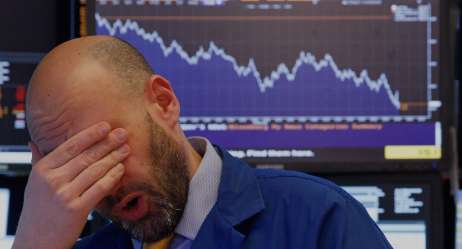History Says Stock Market Should Keep Rising- Why Some Professionals Are Still Nervous
Investors who bravely bought the dip last month are now reaping rewards. But has this strong rebound in U.S. stocks come too fast and too fiercely?Some Wall Street analysts are growing concerned about

Investors who bravely bought the dip last month are now reaping rewards. But has this strong rebound in U.S. stocks come too fast and too fiercely?
Some Wall Street analysts are growing concerned about the current market sentiment. Michael O'Rourke, chief market strategist at Jones Trading, said in an interview, "I think what we're seeing now is emotion and people chasing the rally, and this fear of missing out."
Since hitting a low on April 8, the S&P 500 has surged more than 17% as of Tuesday's close- a rare rally in the past 75 years. Data from Birinyi Associates shows that since 1950, there have been only six instances where short-term returns matched the gains of the past six weeks. And in each case, the subsequent 12-month returns were almost exceptionally strong. The most notable example was the market recovery after the early-pandemic crash in 2020, with the S&P 500 soaring 46% in the following year.
Nevertheless, uncertainties remain. Some investors believe the market could retest April's lows. Wall Street legend Paul Tudor Jones warned that as the economic impact of Trump's tariff policies gradually unfolds, stocks may revisit their lows later this year.
Mark Hackett, chief market strategist at Nationwide, noted that U.S. stock valuations remain elevated, with the S&P 500's forward P/E ratio at a lofty 21x.
Technically, the S&P 500's Relative Strength Index (RSI) surpassed 70 on Wednesday, entering overbought territory. On April 4, just before Trump announced a 90-day tariff pause, the index had briefly dipped below 30.
Despite concerns about overheating, bullish investors can still find reasons to keep buying. Trump has walked back many tariff decisions that could have severely hurt the economy, and most expect him not to reintroduce harsh measures, at least not to the extent announced on April 2.
On the other hand, hedge funds and institutional investors who sold in April or stayed on the sidelines now face FOMO (fear of missing out) pressure, forcing them to chase the rally.
Trade talks between the U.S. and the U.K., as well as between the U.S. and China, have also yielded some positive signals. Trump announced a 90-day suspension of certain tariffs on Chinese goods, significantly cooling trade tensions. jpmorgan data shows that the U.S. effective average tariff rate has dropped from nearly 24% to 14.4%. While still higher than early 2025 levels, it is significantly below recent peaks.
Optimism also stems from the fact that most economic data released so far has yet to show any material damage to the job market or consumer spending from tariffs and policy uncertainty. However, full April data is still pending, and many economists believe the negative effects may take longer to fully materialize.
Melissa Brown, managing director of investment decision research at simcorp, noted, "There has likely been damage done, especially to smaller businesses, that it will be difficult to recover from, at least in the short term."
The White House's future tariff policies remain shrouded in mystery. While many speculate that the "Trump put" mentality persists, the policy direction is still uncertain.
Particularly concerning are national security tariffs on semiconductors and pharmaceutical products, which remain a key focus for investors. O'Rourke revealed that the U.S. Commerce Department was instructed in early April to launch related investigations. If the government imposes high tariffs on these sensitive industries, it could trigger renewed market turmoil.
Beyond equities, bond market dynamics are also drawing attention. The 10-year Treasury yield quietly climbed back above 4.5% on Wednesday, returning to levels seen last month that spooked markets and forced Trump to pause tariffs. Bond prices move inversely to yields, so rising yields mean falling prices.
George Cipolloni, portfolio manager at Penn Mutual Asset Management, said, "Yields on the long end are rising, that's going to be our ultimate battle now."
As of Wednesday, U.S. stocks showed mixed performance, with the S&P 500 edging up, the Nasdaq posting stronger gains, while the Dow Jones Industrial Average and the small-cap-heavy Russell 2000 declined.
Disclaimer: The views in this article are from the original Creator and do not represent the views or position of Hawk Insight. The content of the article is for reference, communication and learning only, and does not constitute investment advice. If it involves copyright issues, please contact us for deletion.